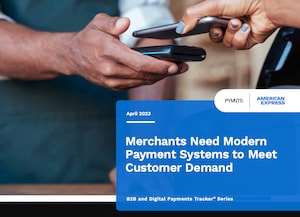February 24, 2021
Financial Statements for the Non-CFO

For the non-CFO, financial statements can seem like a puzzle best left for the pros. But crucial insights may be hiding between the numbers that, if discovered, can help business owners see their company from a different perspective. While you don’t need to be an expert on financial statements or financial reporting, having a basic understanding of how they work can help you make better money management decisions.
What are Financial Statements?
“Financial statements are like the report card for your business,” says Dr. Steven Weil, president of RMS Accounting. “They tell you where you have been and how you did.” Lenders and investors may ask to see your financial statements to gauge how your company is doing as they decide whether to provide funding.
Weil adds that many new business owners think that they can conduct their own financial analysis by tracking numbers in their head. But, he says, “What they believe and what actually happens are often miles apart.” For example, 44 percent of small business owners who had cash-flow problems reported that the problems were a surprise, according to a 2019 survey of 3,500 of firms with 0-100 employees.
There are three main financial statements for a business: the balance sheet, the income statement and the cash-flow statement. Let’s see how they work.
The Balance Sheet
The first financial statement, the balance sheet, is a snapshot of your company’s current financial position. It’s a list of everything your business owns (its assets), as well as everything your business owes to others (its liabilities). When you subtract the liabilities from the assets, you’ll get the value that would be left over if you shut down and paid off the debts, also known as the shareholder’s equity.
By tracking this information, you can see the overall financial position of your business and whether it’s improving over time. One way to think about tracking financial success is to aim to increase your shareholder’s equity by either building up your assets and/or paying down your liabilities.
Balance Sheet Example
As a hypothetical example, let’s look at Bobby, the owner of a construction business, whose balance sheet for the past three months is below.
Assets
Trucks = $150,000
Supplies = $50,000
Construction equipment = $200,000
Building = $400,000
Total Assets = $800,000
Liabilities
Credit card debt = $30,000
Unpaid vendor invoices = $50,000
Truck and equipment loans = $230,000
Mortgage on building = $350,000
Total Liabilities = $660,000
Shareholder’s equity = $800,000 - $660,000 = $140,000
The Income Statement
The second financial statement, the income statement ,calculates your business profits over a set period of time. It’s also known as a profit & loss (P&L) statement, because it shows whether you made a profit or loss.
With this statement, you add up all your sales for the period, and then subtract all your expenses, like the cost of the goods sold, operating expenses (such as salaries and rent), interest paid on debt and taxes. Whatever is left is your profit. If it’s a negative number, you had a loss, typically shown as a number in parentheses. For example ($1,000) is a loss of $1,000.
Income Statement Example
Let’s now look at Bobby’s income statement for the same period as above.
- Revenue = $100,000
- Operating Costs = ($50,000)
- Interest on Debt = ($7,000)
- Taxes = ($15,000)
- Profit (Loss) = $28,000
Bobby’s business made a total profit of $28,000 over this three-month period.
The Cash-Flow Statement
The third financial statement, the cash-flow statement, is similar to the income statement, except it tracks your cash rather than profits. It’s possible for a profitable business to run into financial trouble because it runs out of cash, like if customers take too long to pay their invoices. After all, you need money on-hand to pay your staff, restock inventory and pay your vendors.
That’s why Dr. Brandon Renfro, assistant professor of finance at East Texas Baptist University, considers the cash-flow statement to be most important of the three, especially for small businesses. “The smaller the business, the more important cash flow is because smaller businesses often won’t have as easy of a time obtaining financing to smooth out fluctuations in revenue,” he says.
He found it was even more important during the COVID-19 crisis. “We saw during the pandemic how quickly things tightened up for many businesses once the shutdowns happened.”
Sixty-two percent of small businesses experienced a disruption in cash flow as a result of the COVID-19 crisis, according to a 2020 survey of 458 businesses. By tracking your cash flow, you may be able to catch and react to potential issues earlier.
Cash-Flow Statement Example
It can be helpful to break your cash flow into three categories:
- Operating: Cash flow from the day-to-day management of your business.
- Investing: Cash flow from buying or selling long-term business assets, like equipment or real estate.
- Financing: Cash flow from lenders and investors.
Let’s look at Bobby’s cash-flow statement for the same 3-month period:
- Operating cash inflow = $75,000
- Operating cash outflow = ($50,000)
- Investment cash inflow = $0
- Investment cash outflow = ($10,000)
- Financing cash inflow = $0
- Financing cash outflow = ($20,000)
- Net cash flow = ($5,000)
Above you can see that despite earning a $28,000 profit, Bobby’s business is actually at a net loss of $5,000 in cash flow. This exercise underscores the need to track the actual cash that is going in and out of your coffers each month.
How to Create Your Own Financial Statements
You have a few options for creating your statements, depending on how complicated your finances are. For a smaller business, you may choose to build them yourself using spreadsheets. There are many useful free templates online to help you get started.
Financial statements are like the report
card for your business. [...] They tell you
where you have been and how you did.
—Dr. Steven Weil, president, RMS Accounting
Accounting software is also an option. There are a number of programs that not only make it easier to store and track your data, but also offer functions such as linking to your business checking account for automatic updates based on your transactions.
For more help, you might consider hiring an accountant. “If your business is very busy, or there are a lot of complex components to keep track of, it is well worth hiring an accountant. Not only is a dedicated professional less likely to miss something, but it will be much more efficient for you and free up time that you spend on actually running and operating your business,” says Renfro.
Whichever approach you use, aim to review your statements regularly. This applies even if you hire a professional to build them for you. You can use them to track performance and also plan for the future by forecasting potential opportunities and problems, like an upcoming cash-flow crunch.
Photo: Getty Images
The information contained herein is for generalized informational and educational purposes only and does not constitute investment, financial, tax, legal or other professional advice on any subject matter. THIS IS NOT A SUBSTITUTE FOR PROFESSIONAL BUSINESS ADVICE. Therefore, seek such advice in connection with any specific situation, as necessary. The views and opinions of third parties expressed herein represent the opinion of the author, speaker or participant (as the case may be) and do not necessarily represent the views, opinions and/or judgments of American Express Company or any of its affiliates, subsidiaries or divisions. American Express makes no representation as to, and is not responsible for, the accuracy, timeliness, completeness or reliability of any such opinion, advice or statement made herein.








